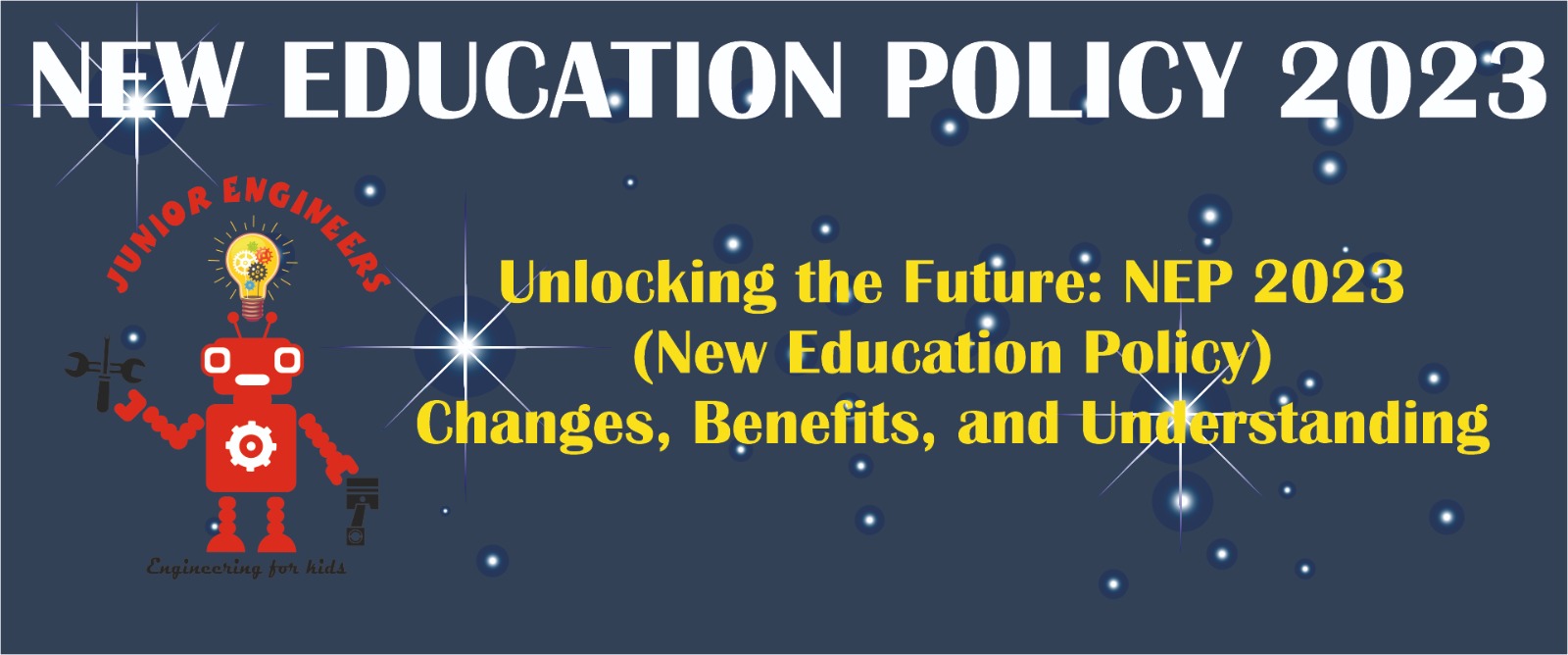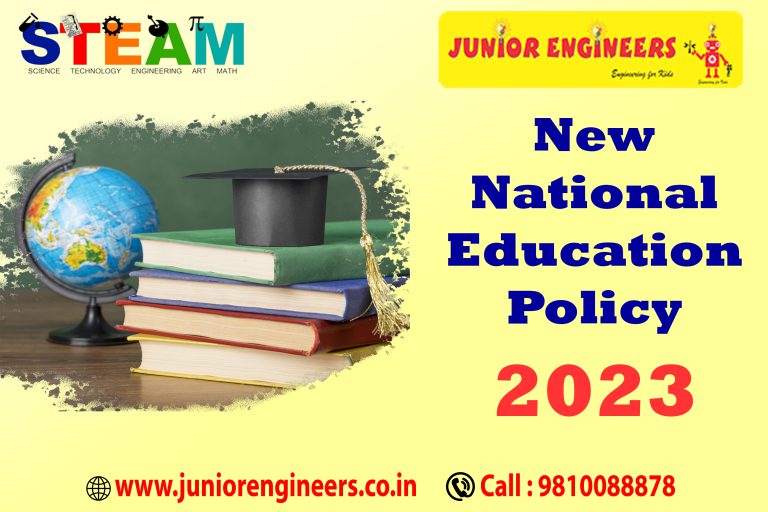
The New National Education Policy 2023 (NEP 2023) represents a monumental shift in India’s educational landscape, driven by visionary leadership, including Prime Minister Narendra Modi and the Ministry of Human Resource Development. This forward-thinking policy marks a departure from a framework that has been in place for three decades and sets the stage for a modernized education system that transcends traditional boundaries.
Unveiled on July 29th, 2020, following approval from the Union Cabinet, the New National Education Policy 2023 has a profound mission—to position India as a global education powerhouse. At its core, the policy focuses on embracing online learning, extending school hours, and moving away from rote memorization to establish an accessible learning environment that empowers individuals from diverse backgrounds.
The heart of this policy’s vision lies in nurturing 21st-century skills such as critical thinking, creativity, and problem-solving. It encourages the establishment of institutions, including universities, that leverage technology to enhance students’ educational experiences.
One of the most significant departures from previous practices is the shift from the 10+2 model to a more progressive structure known as 5+3+3+4. This new framework places a strong emphasis on developing skills and life competencies at all levels of education.
The New National Education Policy 2023 symbolizes India’s stride toward a future where education becomes not only a privilege but also an accessible tool for empowerment. Explore the multitude of possibilities that this policy holds to revolutionize India’s educational landscape, and stay connected to be part of this transformative journey.
Overview of New National Education Policy 2023:
Objective: The New Education Policy in India aims to provide equitable and quality education for ages 3–18.
Pedagogical Shift: It shifts the focus from rote learning to holistic, practical, and problem-solving education.
Assessment Approach: Emphasizes problem-solving abilities over memorization and traditional grading methods.
Language Emphasis: Implements a three-language formula, emphasizing regional language, Hindi, and English.
Language of Instruction: Initial years (grades 1-5) will use regional languages to ease learning before transitioning.
Curriculum Changes: It revises the curriculum to prioritize fundamental concepts, skills, and multidisciplinary knowledge.
Technology Integration: Aims to enhance the accessibility and effectiveness of education through technology integration.
Equitable Education: Aims to bridge the urban-rural education gap, ensuring equal access to quality education for all.
Teacher Quality Enhancement: Focuses on teacher eligibility tests, professional development, and improved education programs.
Vocational Education: Incorporates vocational and technical education to better prepare students for the workforce.
Higher Education Regulation: Establishes a National Higher Education Regulatory Council for oversight and autonomy promotion.
Educational Structure: Introduces a 5+3+3+4 system, replacing the 10+2 structure, for a more flexible and focused approach.
Higher Education Enrollment Goal: Aims to increase higher education enrollment to 50% by 2035.
Higher Education Regulation: Single regulator for HEIs, except Medical and Law Colleges, promoting autonomy and mobility.
MPhil Elimination: Eliminates the requirement for an MPhil degree.
What is 5+3+3+4 Structure?
The recent transformation of India’s education system through the New Education Policy (NEP) 2023 has garnered significant attention for its transition from the traditional 10+2 Structure to the innovative 5+3+3+4 arrangement. This change signifies a departure from the established educational framework, introducing a new sequence of learning stages.
The Four Segments of Education:
The NEP 2023 introduces an innovative Pedagogical and Circular Structure that classifies student education into four stages: Foundational, Preparatory, Middle, and Secondary. These stages are crucial in nurturing a student’s overall development throughout their academic journey.
Foundational Stage (5 Years): The Foundation Stage comprises five formative years of education, including three years of Anganwadi/Pre-Primary/Balvatika and the first and second grades. During this stage, the emphasis is on fostering a strong educational base and essential skills.
Preparatory Stage (3 Years): The Preparatory Stage spans three years, encompassing grades three to five. These years lay the foundation for education’s intermediate and secondary phases, focusing on building a solid academic base and preparing students for more advanced subjects.
Middle School (3 Years): The Middle School stage covers grades six to eight and offers students a comprehensive learning experience that serves as a stepping stone towards secondary education. Educators in this phase concentrate on equipping students with enhanced critical thinking and analytical skills.
Secondary Stage (4 Years): The final segment of the 5+3+3+4 educational model is the Secondary Stage, which extends over four years, covering grades nine to twelve. This extended duration gives students more time for in-depth subject exploration, skill specialization, and holistic development.
Significance of 5+3+3+4 Structure:
The adoption of the 5+3+3+4 Structure in India’s education system carries several important implications:
Holistic Cognitive Growth: The new structure emphasizes comprehensive cognitive development in students.
Optimized Schooling Phases: It enriches students’ educational journey, spanning from foundational to secondary stages.
Right to Education: This structure ensures early and continuous access to education, upholding students’ right to learning from the beginning.
Enhanced Student Foundations: It enhances foundational learning, actively building a stronger base for students as they progress through different stages of education.
Improved Student Retention: This framework is expected to lead to higher student retention rates, fostering longer academic careers within the same institutions.
Versatile Benefits: The 5+3+3+4 Structure actively impacts every aspect of a student’s development, encompassing academic, social, and personal growth.
Positive Impact on Literacy: This approach is positioned to contribute to a higher literacy rate, thereby influencing the nation’s future with a more educated populace.
Forward-Looking Approach: The shift to this modern Structure aligns education with the evolving needs of society and the demands of the 21st century.
Comprehensive Preparation: By encompassing a wider age range, the Structure better prepares students for further education, career pursuits, and life in general.
National Development: The 5+3+3+4 Structure promises to cultivate well-rounded individuals poised to contribute meaningfully to the nation’s growth and prosperity.
Effect of New National Education Policy 2023:
The New National Education Policy 2023 is set to usher in a revolutionary era in education. This policy ensures that educators possess commendable qualifications, reconfigures the duration and content of undergraduate and postgraduate programs, and advocates for instruction in indigenous languages, all with the overarching objective of enhancing education quality, facilitating greater student acquisition of knowledge, and instilling a sense of cultural pride. These modifications will make education more equitable, comprehensive, and dynamic, aiming to equip students thoroughly and encourage them to contribute meaningfully to society.
Objective Of New National Education Policy 2023:
India’s New National Education Policy 2023 aspires to position the nation as a prominent global hub of knowledge and innovation. This ambitious vision is realized through a comprehensive and significant strategy comprised of four key pillars: accessibility, equity, high quality, and accountability. This strategy introduces innovative primary and higher education approaches to foster holistic student development and facilitate broad-based learning across various disciplines.
School Education: Significant Transformation in the New National Education Policy:
Foundational Literacy and Numeracy: The policy aims to ensure a strong educational foundation by 2025, focusing on students achieving foundational literacy and numeracy.
Revamped Examination Structure: Students will now actively participate in exams in grades 2, 5, and 8, reducing the burden and frequency of assessments. Board exams for grades 10 and 12 will change significantly, adopting biannual, objective-descriptive formats.
Interdisciplinary Curriculum: The policy actively encourages interdisciplinary and multilingual education, promoting a flexible curriculum that nurtures diverse skills and knowledge.
Coding and Experimental Learning: Coding will actively become part of the curriculum in 6th grade, and integrating experimental learning approaches will enhance practical understanding.
Health Focus: The policy actively extends the mid-day meal scheme to include breakfast, with the addition of counselors and social workers to prioritize students’ health and mental well-being.
Higher Education Reform: Significant Transformation in the New National Education Policy:
Multidisciplinary Bachelor’s Degrees: Implementing a flexible 4-year undergraduate program with multiple exit points (certificate, diploma, bachelor’s) to nurture a comprehensive skill set.
Phasing Out M.Phil: The policy actively discontinues M.Phil courses, aligning degrees and streamlining the educational journey.
Higher Education Commission: A Higher Education Commission of India will actively regulate higher education to enhance enrollment ratios and maintain academic standards.
Regulatory Councils: A National Higher Education Regulatory Council will actively oversee higher education (excluding medical and legal education). At the same time, a Higher Education Grant Council will actively fund universities and colleges, effectively replacing existing bodies.
Internationalization: The policy encourages international collaboration by permitting foreign universities to establish campuses in India, providing students with enhanced global exposure.
Fee Regulation: Both private and public universities will actively have regulated fees, ensuring equitable access to quality education.
The New National Education Policy 2023 foresees a progressive, flexible, and inclusive educational landscape that empowers students with skills to excel in a swiftly changing world, all while upholding academic excellence and fostering holistic development.
Conclusion:
The National Education Policy 2023 represents a significant transformation in the Indian education landscape, enhancing inclusivity and adopting a student-centered approach. Its objective is to address educational challenges and provide high-quality learning opportunities to all students, regardless of their financial background.
The policy advocates for a comprehensive and unified educational framework, prioritizing skill development, interdisciplinary learning, and the cultivation of innovative and analytical thinking. Furthermore, it emphasizes integrating technology and digital learning tools to enrich the educational experience.
In summary, the National Education Policy 2023 marks a crucial step toward reforming the Indian education landscape. By catering to diverse learning needs, fostering creativity, and aligning education with the evolving needs of society, this policy lays the foundation for a more promising and equitable future for students nationwide.




Leave a Comment